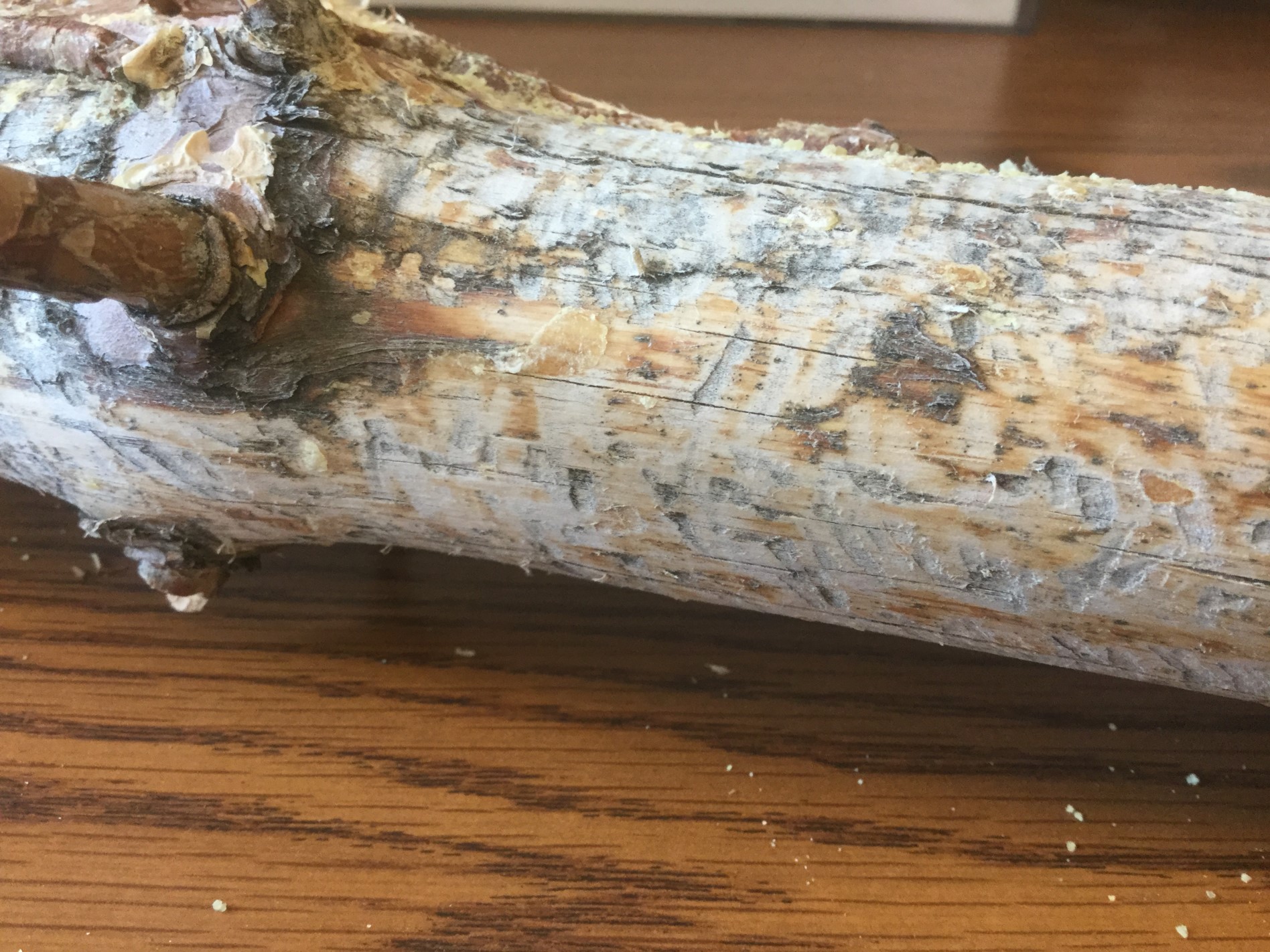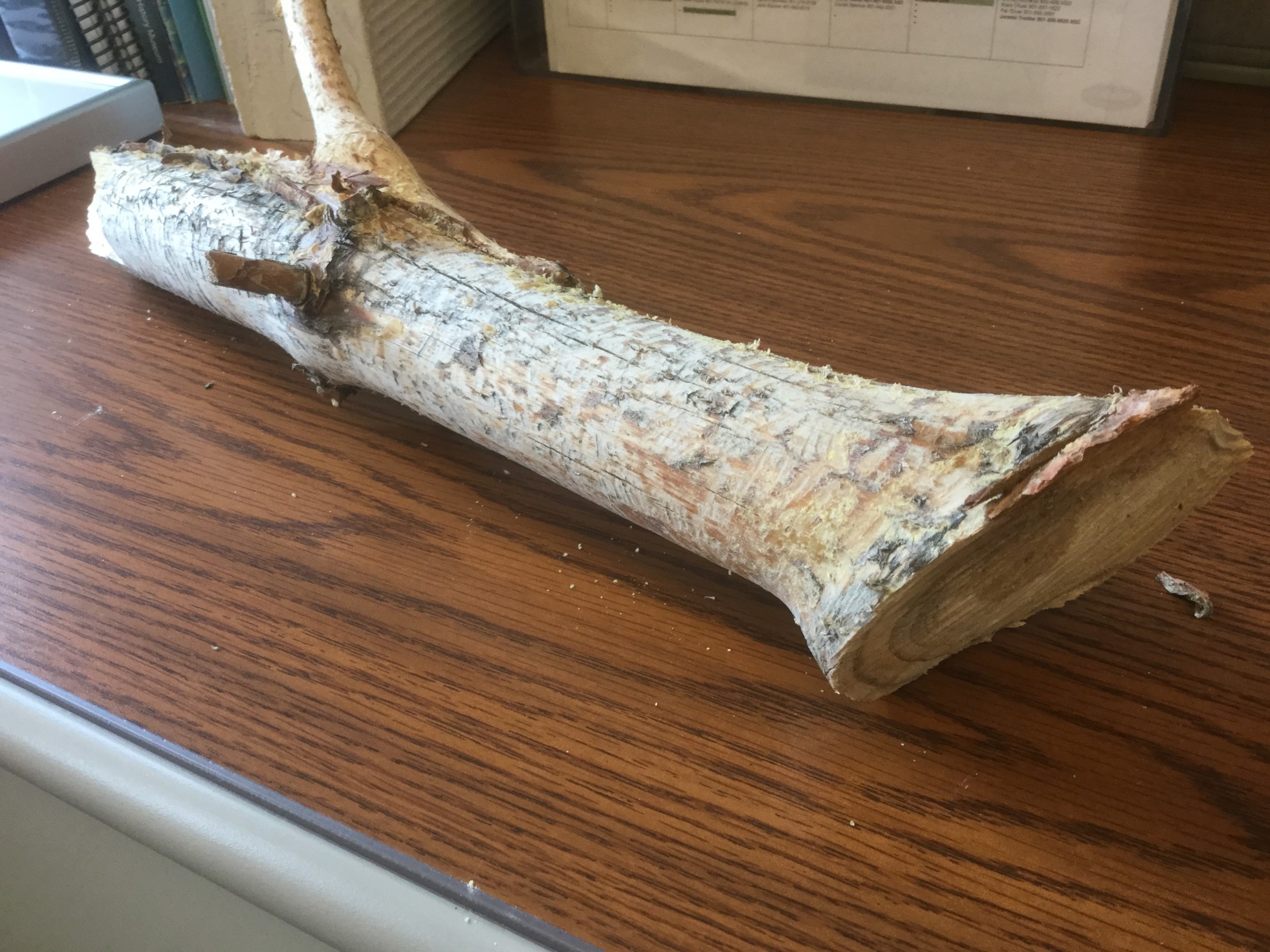Ask an Expert
Question from Maryanne A, Summit County, UT -
Hello, my husband and I live in on the Wanship/Hoytsville line, about 15 minutes from Kimball Junction and Park City. We have several Scotch Pine trees which are between 50 and 60 years of age, beautiful trees in our front yard. Last fall we noticed the last tree in the row was losing needles, and the tree branches were turning brown. Most alarmingly, the upper part of the trunk began to lose its bark. I called the county agent and he suggested that we soak the tree root ball well just before the ground froze, which we did. This spring we lost the tree. We fear that it is bark beetle. We've taken it out, but can now see the beginnings of loss of bark in the upper part of two more trees. Is there anything we can do to save these beautiful threes? Attached is a picture of one of the upper branches of the tree that went entirely brown and which we cut down. Does this look like the awful work of bark beetles? If there is anything I can treat the upper bark with to kill or halt the beetles, I will do it! Thank you for any help!
Best
Maryanne A.


Answer from Dr. Mike Kuhns, USU Extension Forester and Professor (sent 5/11/18) -
Maryanne,
This doesn't look quite right to be due to bark beetle feeding. It looks more like what you would get from an animal scraping the bark and cambium with its teeth. Of course if that were to happen the bark would come off as the feeding was occurring. If bark beetles attack a tree they make an entry hole, tunnel within the inner bark in a predictable pattern that varies by the type of beetle, they lay eggs in their tunnels, the eggs hatch and the young larvae make tunnels that also have a predictable pattern and are smaller in diameter than the adults' tunnels. Eventually they mature and tunnel out through the bark leaving an exit hole. The tunneling of many attacking insects eventually weakens and then kills the tree, but the bark does not come off until that part of the tree is dead. What I am seeing on this tree does not look like bark beetle tunnels. It looks more like the scraping of teeth.
Animals (non-insects) that scrape off bark to feed include porcupines, squirrels, deer, elk, horses, rabbits, mice, and voles. It might seem that you would notice a porcupine feeding, but they mainly feed at night, so you might not. You also might not notice squirrels as they were feeding, and rabbits, mice, voles, and large ungulates (deer and elk) would not be able to reach that far up.
If I had to guess I would say that it is bark stripping and not insect damage, and that it is porcupines rather than squirrels because the tooth marks look too big to be from squirrels. To see what their feeding looks like search Google for "porcupine bark feeding" and click on the Images button.
It will be difficult to control porcupine damage. It is probably not legal to trap them or shoot them, though your UDWR local office might have suggestions. Your area is covered by the UDWR office in Ogden, phone number (801) 476-2740. If you search the web for "porcupine control" most of the suggestions focus on live trapping. There is a good article about porcupines.

